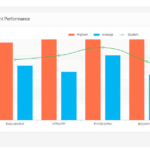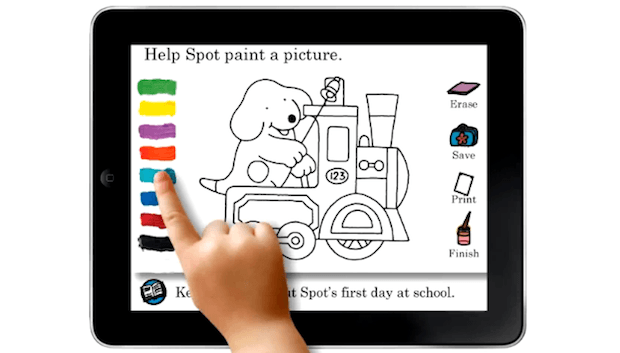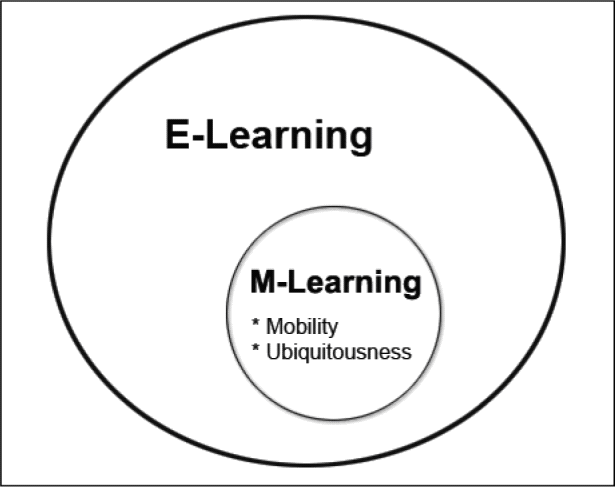
School Management Software and What to Expect From Its Usage
January 26, 2022
Apps that are for Learners with Special Needs.
April 10, 2022What is “augmented reality“? AR incorporates a live view of a natural environment (“fact or reality”) with automated generated feed (inclusive of sound, image, textual content, video, and GPS records) supplementing (“augmenting”) the visual factors inside the view. In other words, AR gives a superior view of the actual global world.
Augmented truth (AR) is a developing area of Technology wherein actual existence is modified and re-presented via pc-generated visuals and sounds.
The most widespread use of AR can be visible through mobile phone apps. Point your mobile device’s camera at something that the App acknowledges, and it’ll generate a 3-D animation or video superimposed over anything is on your mobile phone’s camera’s screen. The impact makes the computer-generated item appear like it’s there.
How important is AR in the sphere of eLearning?
Mobile augmented reality provides educators with a new possibility to start exploring more deeply about the Mobile student’s context and scenario. In truth, the critical aspect you need to keep in mind concerning mobile Augmented reality is that it’s far about augmenting happenings or events in natural life settings, anyplace the learner happens to be. Augmented Reality technology can take any situation, vicinity, surroundings, or instance to a whole new level. AR is uniquely changing the way human beings study with mobile gadgets.
There are presently approximately 1.6 billion AR-enabled cell telephones out of the 15 billion total number of cell phones worldwide. So, how higher can the opportunity be? Mobile augmented reality is making giant strides and innovation in education, gaming, medical, mobile, production, and automobile markets.
What are the forms of AR?
There are numerous ways in which we could use AR. However, the area of interest for this write-up is mobile AR as one of the most effective modern-day methods of contextual mobile learning. Also, some other examples of AR that use smartphones that learners can utilize are other wearables gadgets like Google Glass, which can provide learners with even more fantastic options for contextual learning in the mobile AR technology.
Also, there is the possibility of augmenting a real and a virtual environment together, categorized as “augmented virtuality.” It falls outside the scope of contextual mobile learning. It is worthy of note that many advancements have been achieved in virtual reality, virtual worlds, mixed reality, and education. Still, as stated earlier, this article is all about shedding light on augmented reality in learning.
It is significant to mention 4 factors that are unique to mobile augmented reality, which are:
• Mobility of the user
• The geographical position of the user
• The physical structure where learning can take place
• The way Formal and informal learning connect.
The listed critical factors below, group Augmented reality into:
1. Device/ Technology it’s running on,
2. Interaction Method,
3. The type of media used (sensory remarks technique),
4. Learning processes or outcomes
Best Augmented reality Apps suitable for learning.
1. JigSpace
Allows you to learn about many aspects of life, from automobile engines to the Roman wars. The App features up-close 3-D diagrams, reassembling and assembling 3-d objects, and 3D models of historic battles, together with different excellent functions. It has a free version, but for more advanced features, the price goes for about $50.
2. Google Lens
Google Lens is an effective way of identifying various types of animals, finding out about landmarks, translating words, breaking language barriers, or identifying plants. Keep your device pointed to what you want to study, and it’ll tell you. It’s a free App by Google.
3. Math Ninja AR
Math Ninja AR makes studying the subject, Mathematics fun for youngsters by infusing physical movements, which include; stretching, bending, squatting, crawling, and peering to locate the answer to tasks as the user advances through the different stages within the App. The App can assist in stimulating a user’s memory skills and help them retain information better. It’s a free App.
4. Assemblr
With Assemblr, students learn traditional educational content through augmented and virtual reality. Instructors can also create more than one online lecture film and make virtual 3-d presentations. It has a free version, but for more advanced features, the price goes for about $50.
5. AR Pianist
AR Pianist is an interactive, cutting-edge way for students to discover ways to play the piano, with capabilities inside the App. Such capabilities include: imparting them with a digital piano if they don’t have one, famous virtual pianists that could play songs right in front of them, the potential to reduce song tempo, song learning with interactive sheet music, and live feedback. It’s a free App.
6. CamToPlan
CamToPlan is a must-have App for engineering or architectural college students because it may simply measure whatever is in front of them. This App may benefit indoor layout, landscaping, and other structural measuring purposes. It has a free version, but for more advanced features, the price goes for about $18.
7. Complete Anatomy 2021
Complete Anatomy 2021 is a stylish way to discover the human frame. With this App, you can view up-close 3D views of anywhere in the human body: the veins, nerves, muscles, heart, etc. It is a very great App for any learner interested in the study of medical sciences. Its price ranges from $34.99 to $99.99 per annual subscription.
8. Particular Augmented Reality
This App allows students to create virtual, 3-D art; it has various face filters, virtual alien characters, and more. It’s a simple way of allowing learners to study art and express themselves in a fun-filled environment. Also, it’s an easy-to-use app for aspiring comic, graphics, and 3-D artists, as they get to be educated on and finally be able to create art. It’s a free App.
9. Tracing Projector
Tracing Projector enables students to draw using a virtual tracing mechanism. It features all kinds of pictures that students can trace. There are pictures like “the Mona Lisa” that students can trace. Even the students’ faces could be traced and edited. It’s also a free App.
10. Sky Guide
Sky Guide makes stargazing for college kids easy. Just keep your mobile gadget overhead, and the App will automatically locate stars, planets, constellations, and satellites for you. The App has some added features that can give you notifications and updates from the International Space Station to see stars that are invisible to the human eye with an X-ray filter. Its price goes for about $2.99.




